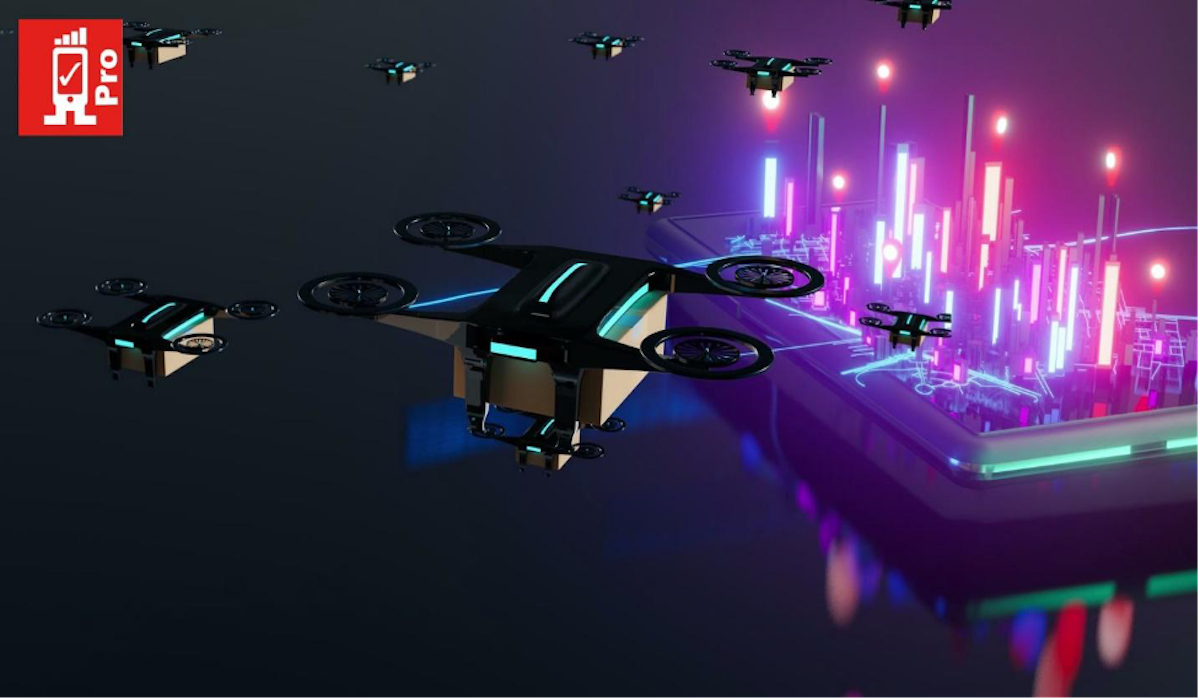
Drones are vehicles that are operated without humans, also called Unmanned Aerial Vehicles (UAVs). These are multi-purpose vehicles such as used in scientific, military, and commercial applications; as Pro 5G speed tests & 5G network testing equipment and tool, Pro RF drive test tools, etc. for conducting 4G/5G speed tests with testing devices mounted on them. Though it seems like a quadcopter, a drone can be an unmanned vehicle of any type such as self-driving cars, gliders, or boats. The concept of drones is not the recent one and was evolved during the first world war where unmanned planes were used to transfer bombs as aerial torpedos. Recently, drones have got huge traction in the telecom industry where the one-of-a-kind vehicle is being used to conduct 4G/5G tests regularly even in areas where human reach is impossible; optimise the network to deliver better network performance to users. Moreover, industries like oil and gas, mining, seaport have already started using drones for surveillance, emergency response, security, infrastructure inspection.
Table of Contents
Why is 5G so important for drones?
In the past, military drones used dedicated radio communications that include large mobile antenna systems or satellites. However, the time has changed with the usage of drones as delivery systems. Modern drones may be required to travel long distances and perform in a network with other potential drones in huge numbers. Adding to it, is the implementation of AI algorithms on 5G connected drones to avoid objects and other drones from getting collided, identify safe landing areas. All these AI computational tasks, cloud computing activities need to be stored on a cloud server to access from anywhere irrespective of the place where drones are being operated. Thus, it can be said that drones will rely on cloud technology to access and operate which means a reliable and seamless internet connection is needed. While the 4G LTE network offers good network speed, it is unable to handle multiple devices simultaneously which maybe thousands or more in numbers and manage high-speed data downloads with low latency.
This is where 5G plays the role and the future of drones becomes brighter with the use of such innovative wireless technology for transmission and bring connectivity on the sky. On comparing 5G vs 4G, 5G offers higher range of speeds up to 10 Gbps, lower response time, i.e., latency which is around 1ms benchmarked to 50ms from 4G, wider range of used frequencies allowing it to support more devices while minimising interference caused from other channels. The most important feature of 5G in drones is the ability to move from one cell to another with no need to add different reconnection protocols which may be long and complicated. With that being said, a drone flying to a far location would not have to take a break or pause for a while every time it surpasses a new network location. Thus, 5G network is imperative for 5G drones allowing them to be connected all the time during the flight.
How are drones helping in the development of 5G technology?
Telecom operators are using drone technology to mount testing devices on them and get mobile connectivity-related data like call tests, the signal strength of the radio network, bandwidth to identify interference in the network. Capturing measurement data, they can optimise the network to give excellent network service to users. At the end of the day, this is all about customers to give them the best Quality of Experience (QoE). With drones, telcos can save money as they can perform the same test with one RF engineer to manage the drone remotely unlike a group of several engineers to conduct the overall test campaign. Moreover, no insurance costs are required for human staff as they are not exposed to hazardous risks. It enables operators to monitor capture data in real-time with a primary requirement of having a seamless 5G internet connection to connect the drone on the network.
Conclusion
As the 5G deployment is expanding, 5G drones are expected to reinvent with several iterations in the years to come. 5G has the capability to run such unmanned vehicles and enhance the way of delivery systems, sending medical supplies in case of emergencies like COVID-19, etc. whereas drones are playing their part to expedite global deployment of such an innovative kind of wireless technology. Drones are used to perform 5G tests continuously at several risky areas to check network coverage and its performance, make amendments to get the best network quality output. 5G and drones are complementing each other as their number of use cases is constantly rising, like inspection, surveillance, security and many more. With the advancement of 5G, drone technology is surely going to take leaps and bound in its future performance inbuilt with different state of the art technologies like infrared cameras, laser etc. and bring innovations in the ecosystem.